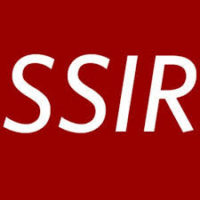When looking across the major social-change efforts of our time, the parabola of success sometimes arcs suddenly and steeply. Take, for example, the precipitous breakthrough in the global effort to eliminate malaria. Beginning in 1980, malaria’s worldwide death toll rose at a remorseless 3 percent annual rate. In 2004 alone, the pandemic claimed more than 1.8 million lives. Then, starting in 2005 and continuing over the next 10 years, worldwide deaths from malaria dropped by an astonishing 75 percent—one of the most remarkable inflection points in the history of global health.
Many events helped reverse malaria deaths, including the widespread distribution of insecticidal nets. Behind the scenes, though, the intermediary Roll Back Malaria (RBM) Partnership played a critical role in orchestrating the efforts of many actors. RBM, founded in 1998, has never treated a patient; nor has it delivered a single bed net or can of insecticide. Rather, RBM has worked across the field of malaria eradication by helping to build public awareness, aggregate and share technical information with a system of global stakeholders, and mobilize funding.
Since 2000, such collaboration has saved more than six million lives. This is not to suggest that RBM is primarily responsible for these dramatic results. But the evidence indicates that by building a marketplace for ideas and a framework for action, RBM helped position the field for breakthrough success.
“RBM has been a clearinghouse, a cheerleader, and a technical adviser for the community working on malaria elimination,” says David Bowen, former deputy director for global health policy and advocacy at the Bill & Melinda Gates Foundation. “RBM’s partnership has been very, very helpful to smaller groups and funders—not in providing funding but in linking resources together.”
Funders and nonprofits increasingly recognize that no single organization or strategy, regardless of how large or successful it may be, can solve a complex social challenge at scale. Instead, organizations need to work collaboratively to tackle pressing social problems. Enter a type of intermediary built to serve as a hub for spokes of advocacy and action, and roll all stakeholders toward a defined goal—an intermediary like RBM. These “field catalysts,” which fit into an emergent typology of field-building intermediaries, help stakeholders summon sufficient throw-weight to propel a field up and over the tipping point to sweeping change.
The Role of Field Builders
A decade ago, The James Irvine Foundation asked The Bridgespan Group to investigate what it takes to galvanize the systems-change efforts of disparate stakeholders working on the same problem and focused on attaining measurable, population-level change in a given field.
Building on more than 60 interviews with leaders in the field of education, Bridgespan and the Irvine Foundation produced a report in 2009, “The Strong Field Framework,”1 that spotlighted five components that make for a truly robust field: a shared identity that’s anchored on the field; standards of codified practices; a knowledge base built on credible research; leadership and grassroots support that advances the field; and sufficient funding and supportive policies.
Seven years after we published the report, we found funders still grappling with what it takes to build a strong field. And nonprofits still wondered whether they should venture beyond delivering a direct service and spin out an intermediary that works through other actors to achieve far-reaching social goals.2 Their questions pushed us to better understand what it takes to achieve population-level change, and to look at the roles that field-building intermediaries might play in the process.
We already knew that such field-building intermediaries came in at least three flavors: (See “Emerging Taxonomy of Field-Building Intermediaries” below.)
- “Capability specialists,” which provide the field with one type of supporting expertise. For example, our own organization, The Bridgespan Group, was founded as a capability builder, with a goal of strengthening management and leadership across the social sector.
- “Place-based backbones,” the mainstays of collective impact, which connect regional stakeholders and collaborate with them to move the needle. One example, Strive Partnership, was founded to knit together business, government, nonprofits, and funders in Cincinnati to improve education outcomes for kids from cradle to college (described in a seminal Stanford Social Innovation Review article in 2011).3
- “Evidence-action labs,” which take on a range of functions to help stakeholders scale up evidence-based solutions. Two examples are Ariadne Labs, which aims to create scalable solutions for serious illness care, and Character Lab, which works to advance the science and practice of character development in children.
Field Catalysts
In late 2016, we surveyed 15 fields that aimed to achieve population-level change. We uncovered a fourth type of intermediary: the field catalyst, which sought to help multiple actors achieve a shared, sweeping goal. It is a cousin to the other types of intermediaries, and it’s likely been around unnamed for decades. (Consider the Southern Christian Leadership Conference’s role in achieving civil rights victories, for example.)
To be sure, not all change requires a field catalyst. At times, a single entity takes off and tips an entire field. Sesame Street, for example, took the field of early childhood education to global scale and dramatically influenced the growth of evidence-based, educational TV programming for preschoolers. (Think Blue’s Clues or Barney & Friends.)5 But the Sesame Streets of the world, in our experience and research, are rare.
Field catalysts, on the other hand, are not uncommon. They share four characteristics:
- Focus on achieving population-level change, not simply on scaling up an organization or intervention.
- Influence the direct actions of others, rather than acting directly themselves.
- Concentrate on getting things done, not on building consensus.
- Are built to win, not to last.



